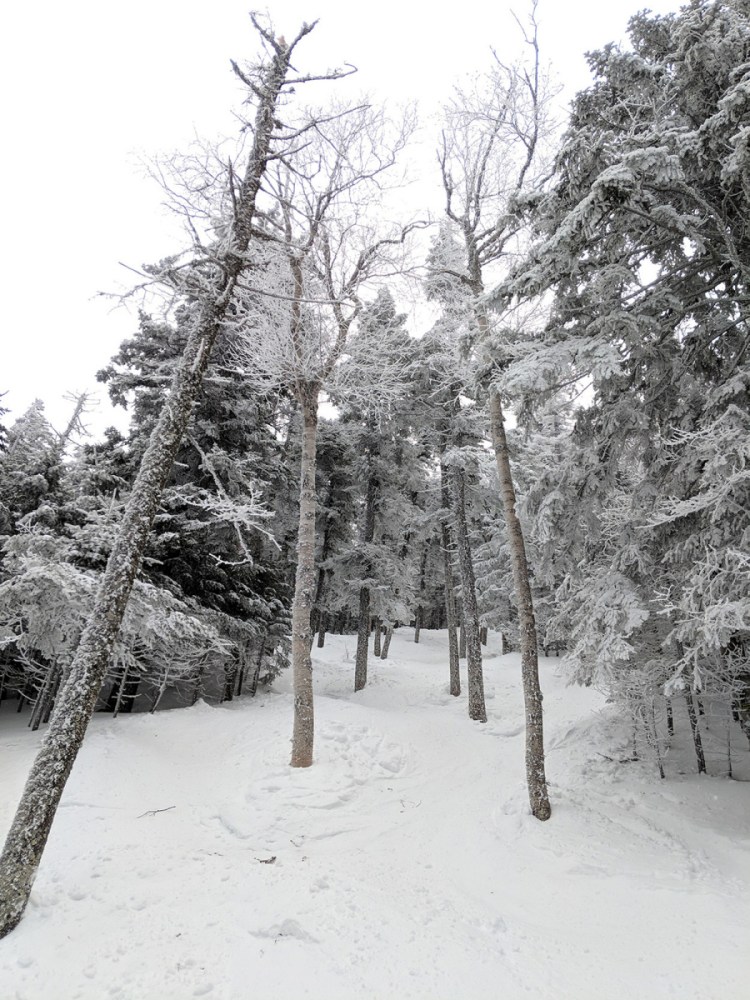It’s cold out there.
Although the days are getting a bit longer with every turn of the globe, it still feels like we’re in the deepest, darkest depths of winter. In recent weeks, below-freezing temperatures have been the norm, with the mercury occasionally dipping below zero – especially when you factor in the bitter wind chill.
Skiers and snowboarders are a legendary hearty bunch – why would we take on these sports if we didn’t like the cold? – but that doesn’t mean sustained cold isn’t a concern. Ski areas all over Maine have been posting warnings about the cold, encouraging visitors to bundle up and watch the temperatures. Some have even temporarily closed lifts or other facilities for a day here and there, finding the cold too much of a danger to their staff and patrons.
Is it worth it to get out on the hill in the extreme cold, when your nostrils freeze during the walk from your car door to your trunk? My vote is yes. If you approach the cold days in a smart way, you’ll find yourself safe, warm and with the slopes practically to yourself. Here are a few tips to make sure your cold-weather days don’t leave you as an ice cube or put a premature end to your season.
n Cover your skin. Frostnip and frostbite are no joke. These are not just cutesy terms, but temporary or permanent damage to your body caused by your skin freezing. The easiest way to prevent damage is make sure you’ve got as little skin exposed as possible during extreme cold. A balaclava is the simplest one-piece solution, fitting snugly under a helmet, and covering your head, neck, and face. Failing that, a combination of helmet, goggles, face mask and scarf (or neck-up) will cover every bit of exposed skin.
If you can’t stand having your beautiful face covered while out in the cold, at least invest in a sunscreen or balm that guarantees wind and frostbite protection. My go-to is Dermatone, a favorite of skiers and climbers that feels like an extra layer of skin.
n Take a break. Ever since I started skiing Sugarloaf on a weekly basis in the 1990s, my father (never one to shy away from the cold) put us on a pretty set schedule. Ski from first chair (8:30 a.m.) to last (around 4 p.m.), with breaks at 10, noon and 2. Three bathroom breaks in an eight-hour day of skiing is a great way to pack in the runs, but can be a brutal regimen when the temperatures dip below zero. On the coldest days, listen to your body rather than watch the clock. There’s no shame in taking time to warm up in the lodge every couple runs. You’re much better off with one or two fewer runs than with lingering frostbite on your next day out.
There’s a reason resorts push their off-hill options on Arctic days. In fact, extreme cold can offer a perfect excuse to try out ski area amenities you’ve previously been too busy to experience. Scale the climbing wall at Sugarloaf’s Anti-Gravity Complex or pamper yourself with a treatment at the Jordan Spa at Sunday River.
n Layers. It turns out your grandmother was right – put your layers on before you go out in the cold. Adding extra layers is the simplest way to hold in the heat and keep out the cold when you’re outside. It’s worth investing in a moisture-wicking base layer that will keep perspiration from chilling you to your core. From there, a mix of thermal layers under your jacket or shell should keep you toasty. Zip fronts are ideal, so you can quickly add or remove layers without shedding the rest of your gear.
One exception to the layering rule? Socks. Ski boots are already tight contraptions, and extra layers of material put you in danger of cutting off circulation to your lower extremities. Good blood flow means more warmth, so stick with a single pair of high-quality socks.
n Don’t ski solo. As someone who almost always skis alone, this is a tough piece of advice to take. But when things get cold, it’s a change worth making. Skiing with someone is crucial in case of an unexpected injury, when exposure to frigid temperatures can lead to hypothermia … or worse. A ski buddy ensures that if need be, ski patrol can be notified as quickly as possible.
And not for nothing, an extra body or two on the chairlift does make everyone feel a little bit warmer (or at least block the wind).
n Keep yourself fueled. Skiing hungry is a surefire way to feel the cold early and slow you down. Make sure you’ve got energy bars or other high-calorie food to give yourself energy to keep going. The same goes for staying hydrated – while hot coffee will give some temporary relief from the cold, water is the key to keeping your body warm and moving. Finally, don’t make the mistake of imbibing alcohol as a deterrent to the cold. While it can feel temporarily warming, in the long run it numbs your senses and makes you more susceptible to the cold. Save it for apres.
Josh Christie is a freelance writer living in Portland. Along with his brother, Jake, he writes about great Maine destinations for outdoors enthusiasts. Josh can be reached at:
joshua.j.christie@gmail.com
Send questions/comments to the editors.


